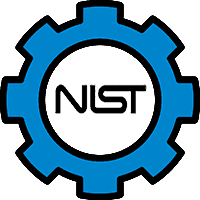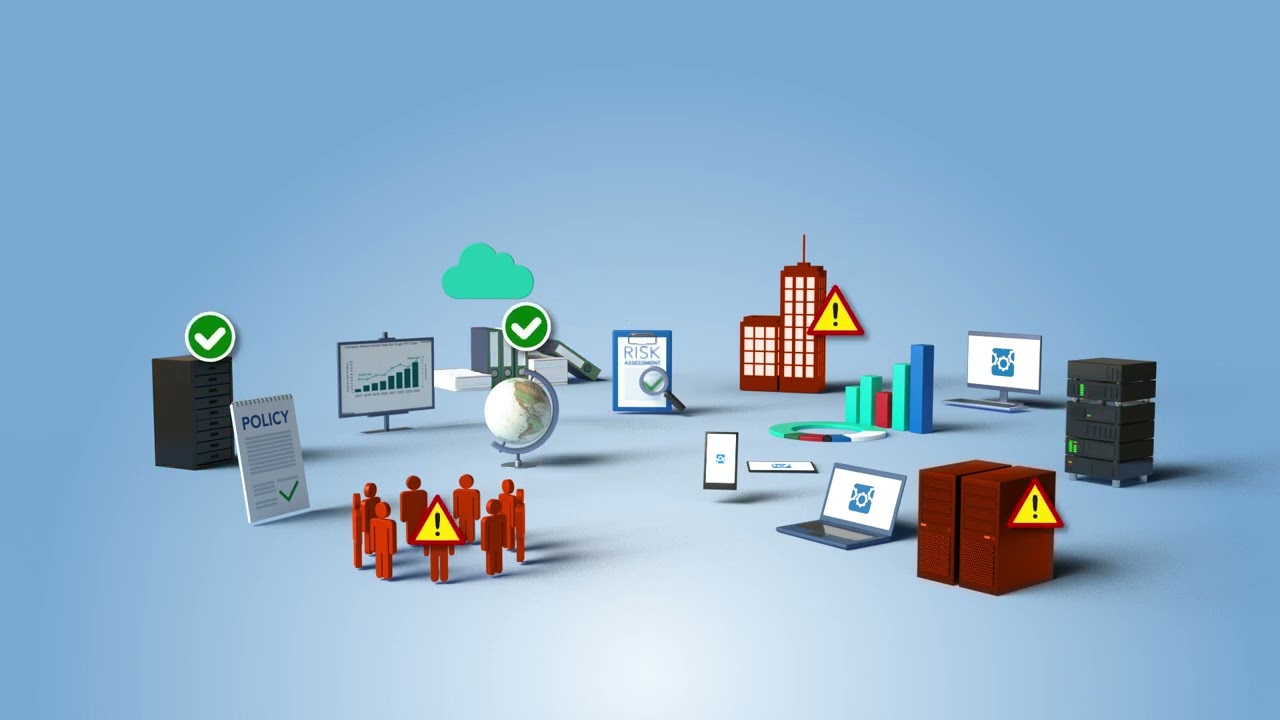Comprehensive Integrated Risk Management Solutions are available for all the world’s standards!
Table of Contents
ToggleOur risk assessment modules all participate in auto-mapping to the global compliance frameworks, saving you time and trouble. Even better, our real-time scoring, reporting, and dashboards help you stay current and compliant.
Build your own risk module easily, or use our preconfigured inventory covering:

NIST Special Publication 800-30
NIST Special Publication 800-30 provides guidance for conducting risk assessments of federal information systems and organizations, amplifying the guidance in Special Publication 800-39. Risk assessments, carried out at all three tiers in the risk management hierarchy, are part of an overall risk management process—providing senior leaders/executives with the information needed to determine appropriate courses of action in response to identified risks. In particular, provides guidance for carrying out each of the steps in the risk assessment process (i.e., preparing for the assessment, conducting the assessment, communicating the results of the assessment, and maintaining the assessment) and how risk assessments and other organizational risk management processes complement and inform each other.
Special Publication 800-30 also provides guidance to organizations on identifying specific risk factors to monitor on an ongoing basis, so that organizations can determine whether risks have increased to unacceptable levels (i.e., exceeding organizational risk tolerance) and whether different courses of action should be taken.
Modules include:
- NIST Special Publication 800-30 - Risk Management Guide for Information Technology Systems
800-30 Risk Assessment Methodology
NIST 800-30 is part of an overall process outlining the specific steps needed in an organization’s risk assessment of its IT system. It’s typically used in federal information systems. This step-by-step guide shows how to conduct the assessment, identify the assets, vulnerability identification, or threat events, and the potential impact on the organization.
The guide is a roadmap for the assessment. It assists the organization in preparing for it, conducting each part of it, and then effectively communicating the results in risk assessment reports. It helps better evaluate existing security controls and any needed improvements.
This methodology helps streamline what can be a complex process, ensuring that the steps in a risk analysis are done correctly.
Why Choose Us
Continuum GRC is a leading expert in risk management (and everything around it). We work with companies nationally and internationally to help them better navigate the complexities of various assessments, regulations, and compliance needs. We’re deeply familiar with NIST 800-30, helping risk assessment teams use it effectively. We’ll help you better identify and prioritize risk response actions in your organization, and create effective reporting and documentation. Because we’ve worked with so many high-level organizations at the Federal level, we can save you time and resources on working through this key step.
FAQ
How are risks prioritized in NIST 800-30?
With NIST 800-30, risks are prioritized based on their likelihood and the potential severity of the impact upon the organization (often done using a risk matrix). It then provides a framework for methodically working to address potential threats in their order of importance, with resources allocated appropriately.
Why is NIST SP 800-30 important?
Conducting risk assessments can be complex. There are many steps that must be addressed and in a certain order. NIST SP 800-30 breaks down each step, ensuring that the process is methodical and thorough. It’s a roadmap to ensure that your IT system is secure in handling sensitive data.
How does NIST SP 800-30 enhance cybersecurity?
NIST SP 800-30 gives organizations the structured methodology to conduct effective risk assessments of their information systems. With a cohesive way to identify, analyze, and prioritize risks to their sensitive data, it creates better decision-making and spending around risk management. Teams know where to proactively allocate resources and attention.
What are the key components of NIST SP 800-30?
The objective is to give organizations a very structured approach to a risk assessment of their IT systems. It begins with what’s needed to prepare for the assessment, as in scope and objectives. It walks the team through conducting the assessment and identifying threats. It helps effectively document the findings for mitigation and finally, establish ongoing monitoring.
What tools or methods can be used?
A variety of methods can be used for NIST 800-30. Quantitative or qualitative data analysis, cost-benefit analysis, historical data, risk matrices, vulnerability scanning and penetration tests are all in the tool box. NIST 800-30 outlines and recommends different tools depending on objectives.
How can organizations get started with NIST 800-30?
It’s important to begin with a clear scope and purpose for the assessment. Which systems, data, and locations are involved? Starting there will make the use of NIST 800-30 most effective. Continuum GRC can also help, navigating your organization through this process in a more efficient way.
What are you waiting for?
You are just a conversation away from putting the power of Continuum GRC to work for you.
Contact us using the form below or calling us at 1-888-896-6207 for immediate assistance.
About the Standard
NIST Special Publication 800-30, titled "Guide for Conducting Risk Assessments," provides a framework for conducting risk assessments for federal information systems and organizations. It is part of the NIST Risk Management Framework (RMF) and aligns with NIST SP 800-53. Compliance with NIST 800-30 is not about meeting a checklist of mandatory requirements but rather adopting a structured process for identifying, assessing, and managing risks to information systems. Below is an overview of the key components and steps outlined in NIST 800-30 that organizations, particularly federal agencies or those subject to federal regulations, must follow to achieve compliance:
Key Compliance Requirements for NIST 800-30
-
Purpose and Scope of Risk Assessment:
- Objective: Conduct risk assessments to identify risks to organizational operations, assets, individuals, and other organizations resulting from the operation of information systems.
- Applicability: Applies to federal agencies, contractors, and organizations managing federal information systems. Non-federal organizations may also adopt it for robust risk management.
- Integration with RMF: Risk assessments must align with the NIST RMF steps (Categorize, Select, Implement, Assess, Authorize, Monitor) as per NIST SP 800-37.
-
Risk Assessment Process: NIST 800-30 outlines a four-step risk assessment process that organizations must follow:
Step 1: Prepare for the Risk Assessment
- Define the purpose, scope, and boundaries of the risk assessment (e.g., specific systems, processes, or assets).
- Identify the organizational context, including mission, objectives, and risk tolerance.
- Establish assumptions and constraints (e.g., threat sources, vulnerabilities, and likelihood).
- Determine the risk assessment approach (qualitative, quantitative, or hybrid).
- Identify roles and responsibilities for stakeholders (e.g., risk assessors, system owners, security officers).
Step 2: Conduct the Risk Assessment
- Identify Threat Sources: Catalog potential threats (e.g., adversarial, environmental, human error) using sources like NIST SP 800-30 Appendix D or threat intelligence.
- Identify Vulnerabilities: Assess weaknesses in the system that threats could exploit (e.g., misconfigurations, outdated software).
- Determine Likelihood and Impact: Evaluate the likelihood of a threat exploiting a vulnerability and the potential impact (e.g., low, moderate, high) using NIST 800-30’s risk matrices (Appendices G and H).
- Calculate Risk: Combine likelihood and impact to determine the level of risk (e.g., Low, Moderate, High) for each threat-vulnerability pair.
- Document Findings: Record all identified risks, including threat events, vulnerabilities, likelihood, impact, and risk levels.
Step 3: Communicate Results
- Share risk assessment findings with relevant stakeholders (e.g., system owners, authorizing officials).
- Provide clear, actionable reports that include risk levels, potential impacts, and recommended mitigations.
- Ensure communication aligns with organizational governance and reporting requirements.
Step 4: Maintain the Risk Assessment
- Monitor risks continuously to account for changes in threats, vulnerabilities, or system configurations.
- Update the risk assessment periodically or when significant changes occur (e.g., new threats, system upgrades).
- Integrate findings into the organization’s ongoing risk management processes (e.g., Plan of Action and Milestones [POA&M]).
-
Risk Model and Framework:
- Adopt the NIST 800-30 risk model, which defines risk as a function of threat, vulnerability, likelihood, and impact.
- Use consistent terminology and methodologies as outlined in the publication to ensure repeatability and comparability.
- Align with organizational risk tolerance and risk management strategy.
-
Documentation and Reporting:
- Maintain detailed documentation of the risk assessment process, including methodologies, data sources, and assumptions.
- Produce a risk assessment report that includes:
- Summary of risks and their severity.
- Recommendations for risk mitigation (e.g., security controls from NIST SP 800-53).
- Supporting evidence (e.g., threat and vulnerability data).
- Ensure documentation complies with federal requirements, such as those in FISMA (Federal Information Security Modernization Act).
-
Integration with Security Controls:
- Use risk assessment results to inform the selection and implementation of security controls from NIST SP 800-53.
- Ensure controls address identified risks and are tailored to the system’s security categorization (e.g., Low, Moderate, High per FIPS 199).
- Validate control effectiveness through testing and monitoring.
-
Roles and Responsibilities:
- Assign clear roles for conducting and overseeing the risk assessment (e.g., Risk Executive, Information System Security Officer, Authorizing Official).
- Ensure personnel are trained in NIST 800-30 methodologies and risk assessment practices.
-
Compliance with Federal Regulations:
- For federal agencies, compliance with NIST 800-30 is mandated under FISMA, which requires periodic risk assessments for information systems.
- Contractors or vendors supporting federal systems must align with NIST 800-30 as part of their contractual obligations.
- Ensure risk assessments support System Security Plans (SSPs) and Authorization to Operate (ATO) processes.
-
Flexibility and Scalability:
- Tailor the risk assessment process to the organization’s size, complexity, and risk profile.
- Apply NIST 800-30 at different tiers (organization, mission/business process, or information system level).
Additional Considerations
- Threat and Vulnerability Sources: Use credible sources for threat and vulnerability data, such as NIST’s National Vulnerability Database (NVD), threat intelligence feeds, or historical incident data.
- Continuous Monitoring: Incorporate risk assessments into a continuous monitoring strategy to address evolving threats and vulnerabilities.
- Tools and Automation: While NIST 800-30 does not mandate specific tools, organizations may use automated risk management tools (e.g., GRC platforms) to streamline the process, provided they align with the NIST methodology.
- Interdependencies: Consider risks from interconnected systems, third-party vendors, or supply chains.
Non-Compliance Implications
Failure to follow NIST 800-30 for federal systems may result in:
- Non-compliance with FISMA or other federal regulations.
- Denial or revocation of an ATO.
- Increased risk of security incidents due to unaddressed vulnerabilities.
- Potential audit findings or penalties for federal agencies or contractors.
Resources for Compliance
- NIST SP 800-30 (Revision 1): Primary guide for risk assessment methodology.
- NIST SP 800-53: Security controls to mitigate identified risks.
- FIPS 199/200: Standards for security categorization and minimum security requirements.
- NIST SP 800-37: RMF guidance for integrating risk assessments into the system authorization process.
- Appendices in NIST 800-30: Provide templates, risk matrices, and examples for threat sources, vulnerabilities, and risk determination.

